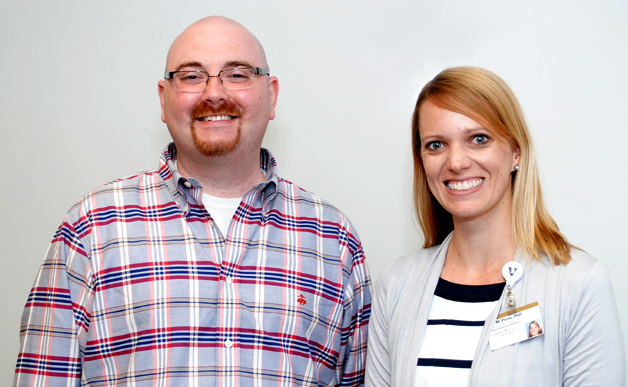Hearing Aid Lab

Travis Moore working with
Erin Picou, Research Assistant Professor of Hearing and Speech Sciences
Overview
Speech-language-pathologists (SLPs) and teachers of the deaf and hard-of-hearing (deaf educators; DEs) routinely encounter children with hearing loss. Despite this, SLPs and DEs receive only brief training regarding one of the most common treatment options for hearing impairment: hearing aids. Hearing aids are especially important for children, who need good access to sound in order to develop language and succeed in school (e.g., Bess and Tharpe, 1984). Despite only brief exposure to hearing aids during their graduate training, SLPs and DEs find themselves caring for children who depend on hearing aids for successful speech therapy and learning.

Even under careful, normal use hearing aids can experience a host of minor problems that render them effectively useless: such as becoming plugged with ear wax, dead batteries, not fitting snugly in the ear, falling off the ear, clogged microphones, etc. Basic proficiency with these devices is required to (1) notice and (2) fix these problems as they occur. Additionally, SLP and DE students must feel confident handling these issues to engage in helpful behaviors and apply the knowledge gained during graduate education. The purpose of this learning module was to supplement traditional classroom instruction with an online resource geared toward increasing students’ exposure to hearing aid related content.
The module is a standalone website (http://www.vestib.com/hearingaidlab) that discusses hearing aids as electric-acoustic devices, as well as how to repair and maintain common hearing aid issues. Students are able to click on hearing aid components from an engineering-style exploded view in order to learn more (see figure 1). Content includes custom art, animations and explanatory text. There is also a self-assessment page that offers no-risk feedback so students can assess their progress.
Assessment
In order to quantify the potential effectiveness of the module, we used self-reported confidence and instructor assessment of student competence. Specifically, confidence was assessed using a modified version of an existing clinical skills confidence scale (Marel et al., 2000), administered both pre- and post-module implementation. These confidence ratings were compared to a previous group of students who filled out the same questionnaire (pre- and post-classroom only instruction) without using the learning module. Instructor assessment of competence was conducted using a rubric to quantify skill level based on students’ responses to written test questions. These test scores were also compared to the test scores of the previous year’s cohort of students who did not use the learning module.
Results
Mean pre and post confidence ratings for each cohort (i.e., module and no-module) are shown in figure 2. The scores were corrected to have a common “pre” value. There was a non-significant trend for the module cohort to report higher self-confidence at the end of the semester, compared with the no-module cohort. The mean pre and post confidence scores for each skill included in the confidence questionnaire are shown in figure 3.


Final exam scores did not differ significantly across cohorts. Together, these results indicate the online learning module can improve non-audiology student confidence in hearing-aid-related clinical skills. The open-access, standalone website can be used both in the classroom, to supplement lecture material, and as a reference for after graduation.
Presentation
Moore, T. and Picou, E. (2018, April). Impact of an Online Learning Module on Student Confidence. Poster presented at the American Academy of Audiology annual convention, Nashville, TN. View poster.
